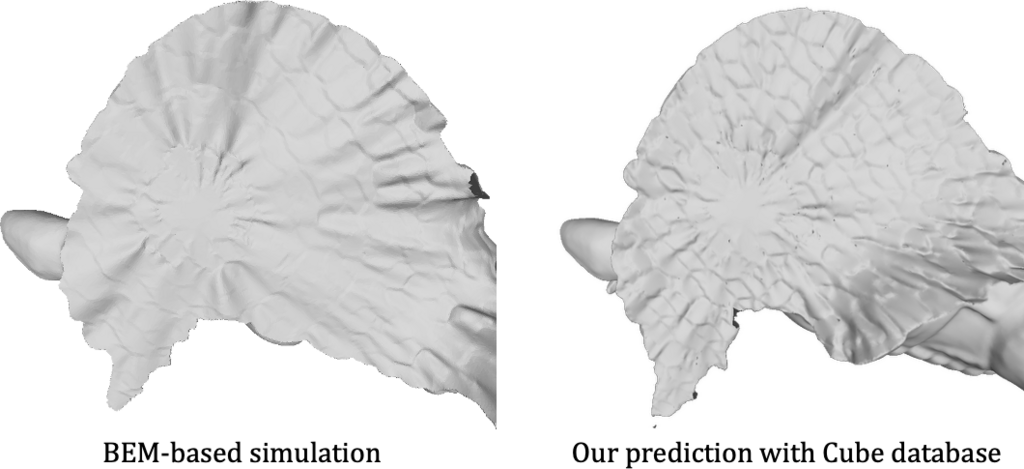In this paper, we propose a novel data-driven method that uses a machine learning scheme for formulating fracture simulation with the Boundary Element Method (BEM) as a regression problem. With this method, the crack-opening displacement (COD) of every correlation node is predicted at the next frame. In our naive prediction, we design a feature vector directly exploiting stress intensities and toughness at the current frame, so that our method predicts the COD at the next frame more reliably. Thus, there is no need to solve the original linear BEM system to calculate displacements. This enables us to propagate crack-fronts using the estimated stress intensities. There are existing works which use the machine learning approach to accelerate the speed of traditional physics-based simulations like smoke and fluid, but our work is the first to incorporate the machine learning scheme into BEM-based fracture simulations. Our implementation accelerates the acquisition of displacements in linear time over the number of crack-fronts at each time step compared with the conventional solution whose time complexity grows exponentially based on the BEM linear system. The databases generated by our method are versatile, and can be applied to general situations and different models.
Papers
- Yuhang Huang, Yonghang Yu, Takashi Kanai: “Predicting Brittle Fracture Surface Shape From a Versatile Database”, Computer Animation and Virtual Worlds, e1865, 2018.
[Paper (author’s version)][Paper (publisher’s version)] - Yonghang Yu, Yuhang Huang, and Takashi Kanai: “Data-Driven Approach for Simulating Brittle Fracture Surfaces”, ACM SIGGRAPH ASIA 2017 Workshop: Data-Driven Animation Techniques (D2AT), No.3, 8 pages, Bangkok, Thailand, 2017.
[Paper (author’s version)]

